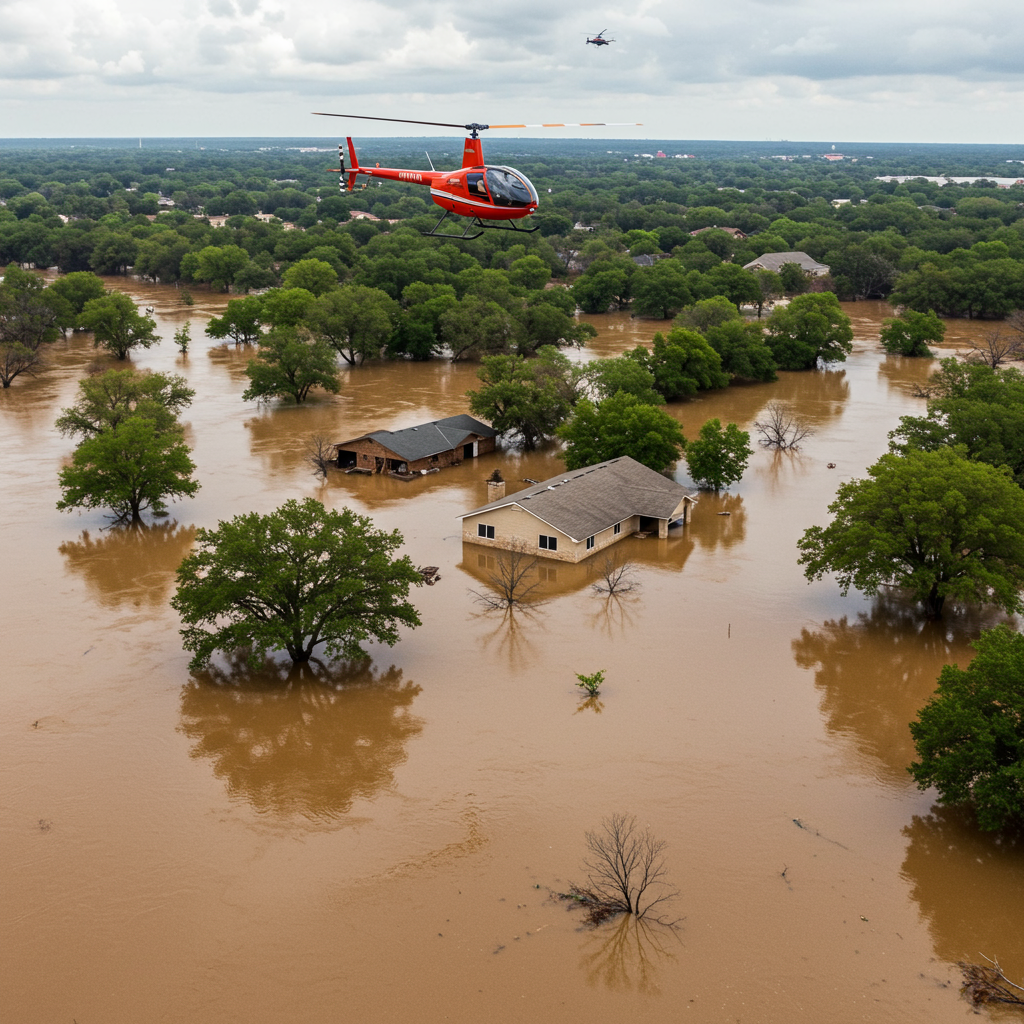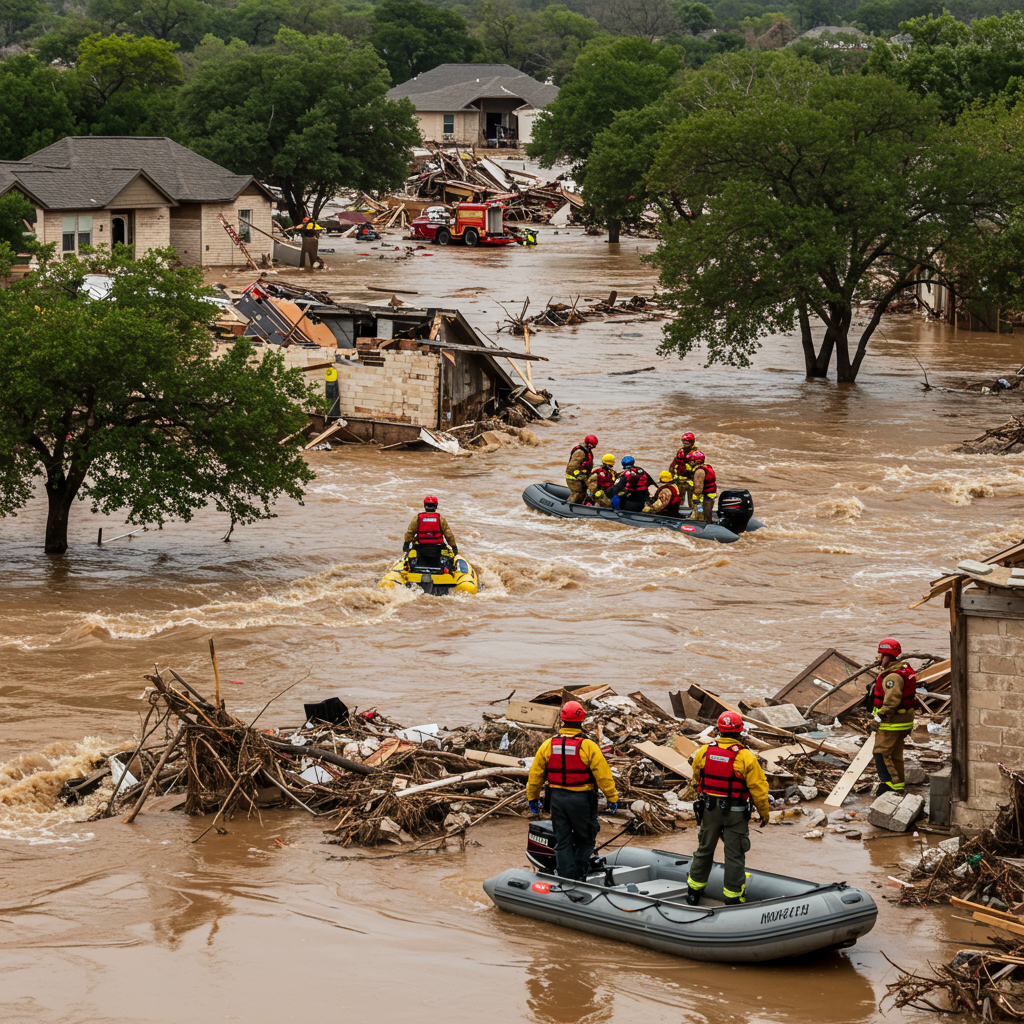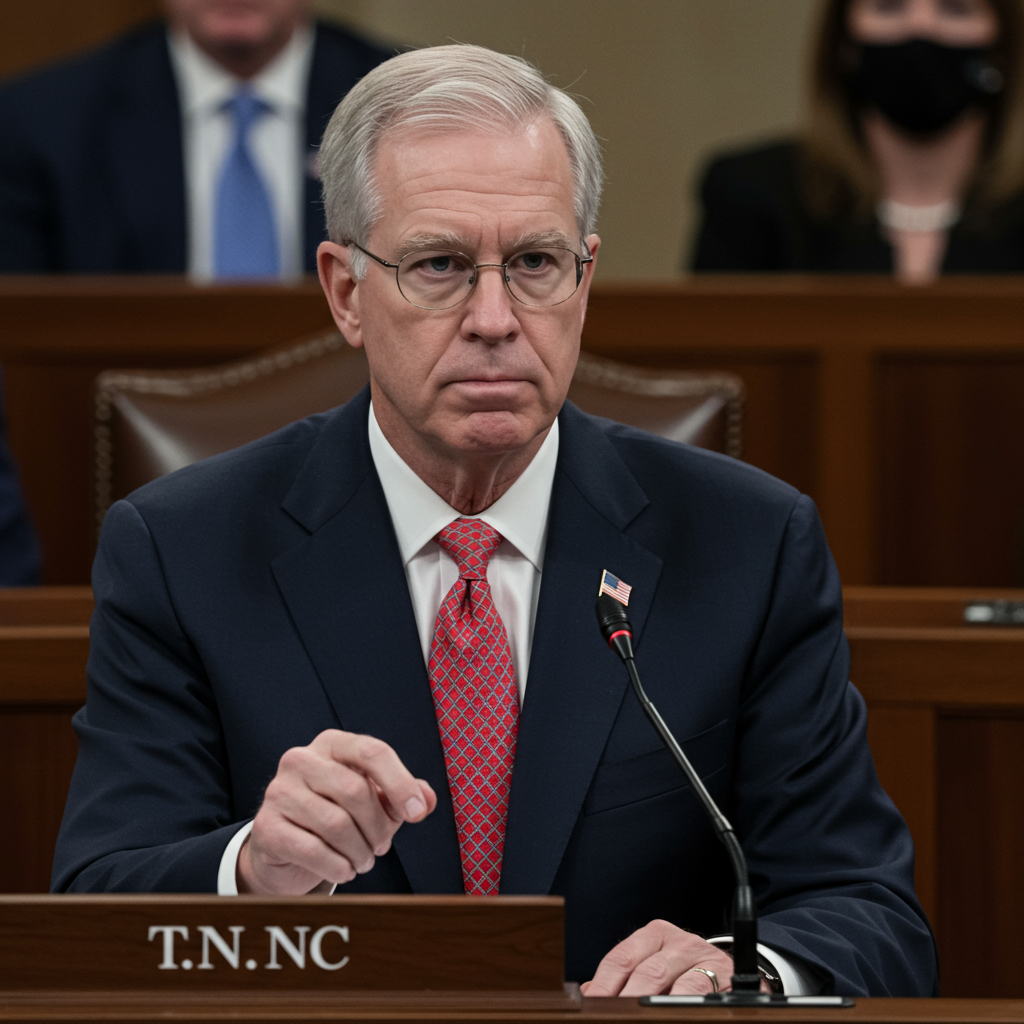Torrential rain unleashed catastrophic flash flooding across parts of Central texas in early July 2025, leaving a trail of devastation and a significant human toll. The disaster, centered primarily along the Guadalupe River in areas like Kerr county, resulted in the deaths of at least 51 people statewide, with dozens more reported missing. Search and rescue operations became an immediate, desperate race against time as floodwaters surged with unprecedented speed and intensity.
The event underscored the brutal power of nature in the Texas Hill Country, a region already known as “Flash flood Alley” due to its unique topography where rain rapidly flows down steep limestone hills into narrow river valleys. This specific flood was characterized by an extreme surge: the Guadalupe River near Kerrville rose by an astonishing 20 to 26 feet in as little as 45 to 90 minutes on the morning of Friday, July 4th. This rapid increase created a phenomenon known as a “flood wave,” a fast-moving wall of water capable of traveling at speeds of 25-40 mph, overwhelming everything in its path. The National Weather Service reported that the Guadalupe River reached its second-highest level on record during this event, surpassing a previous flood in 1987 that also claimed lives.
Tragedy Strikes Camp Mystic and Local Communities
Among the most devastating impacts was the flood’s direct hit on Camp Mystic, a historic Christian summer camp for girls located in Hunt, Texas, right on the banks of the Guadalupe River. With approximately 750 children at the camp this week, the rapid inundation proved deadly. As of the evening of July 5th, 27 children from the camp were still missing, and families had begun confirming the deaths of some campers. FEMA flood mapping indicated that many camp buildings were situated in “special flood hazard areas” with a notable annual risk of flooding, raising questions about the camp’s vulnerability.
The destruction extended far beyond Camp Mystic. Across Kerr County and surrounding areas, the floodwaters washed out roads, severely damaged buildings, and left vast fields of debris including overturned vehicles and broken trees. Communities in Kerrville, Ingram, Center Point, and San Angelo reported significant damage. Fatalities were recorded across five counties, with Kerr County suffering the most severe impact, accounting for 43 deaths, including both adults and children. Other affected counties included Travis, Kendall, Tom Green, and Burnet. Another nearby facility, Heart O’ the Hills camp, tragically lost its director, Jane Ragsdale, although camp officials clarified that the camp was not in session at the time of the flooding and most individuals on site had reached safety.
Scale of the Rescue and Recovery Efforts
The immediate aftermath triggered one of Texas’s most extensive search and rescue operations in recent history. Teams utilizing helicopters, boats, and drones fanned out across the affected region, combing the riverbanks and surveying inundated areas. Authorities reported rescuing or recovering over 850 people, many of whom were found clinging to trees or structures, necessitating helicopter airlifts. The U.S. Coast Guard was among the agencies involved, successfully rescuing 15 campers by helicopter from Camp Mystic alone.
The scale of missing persons prompted the establishment of reunification centers. Facilities were set up in Ingram and Kerrville, one specifically designated for families seeking missing individuals from Camp Mystic, highlighting the concentrated nature of that tragedy. The sheer number of missing individuals, including at least 13 in Travis County beyond the campers, emphasized the widespread nature of the emergency. Over 850 people were evacuated from Kerr County, with at least eight injuries reported among those rescued. The scenes described and captured in photographs depicted the chaos and devastation – damaged homes, submerged vehicles, debris piled high on bridges, and the visible impact of the powerful current along the riverbanks.
Warnings, Timing, and the Response Debate
The rapid onset of the flood, particularly hitting while many residents were asleep, brought scrutiny to warning systems and official preparedness. The National Weather Service (NWS) did issue a series of alerts, beginning with a Flood Watch on Thursday afternoon, predicting significant rainfall. Automated mobile phone alerts became increasingly urgent Friday morning, advising people to seek higher ground. Critically, at 4:03 a.m. Friday, the NWS office issued a rare “flash flood emergency,” signaling imminent danger and a severe threat to human life.
Despite these warnings, local officials in Kerr County stated they were caught off guard by the event’s severity and speed. Kerr County Judge Rob Kelly indicated that the county lacked a specific river warning system and that they had “no reason to believe that this was going to be anything like what’s happened here.” Kerrville City Manager Dalton Rice recounted jogging by the river at 4 a.m. with no apparent danger, only to find it dramatically changed by 5:20 a.m. Officials suggested the public might also be desensitized to frequent weather warnings. Questions were also raised about the decision not to conduct prior evacuations, with Lt. Gov. Dan Patrick noting that evacuation decisions rest with local authorities who were uncertain about the storm’s path.
The debate included revelations that the county had considered a flood warning siren system years prior but abandoned the idea due to cost concerns. While NWS officials stated their local offices were adequately staffed and issued timely warnings, Homeland Security Secretary Kristi Noem acknowledged the difficulty in predicting exact rainfall amounts and pledged the Trump administration’s support in upgrading federal weather technology. Republican U.S. Rep. Chip Roy acknowledged the public’s questions and the likelihood of “finger-pointing” after such a disaster.
Climate Change and Future Preparedness
Climate scientists quickly pointed to the intensity of the rainfall as consistent with expected impacts of climate change. A warmer atmosphere holds significantly more moisture (about 3%-4% more per degree Fahrenheit of warming), increasing the potential for extreme precipitation events. Data from the Texas state climatologist indicates that extreme one-day rainfall events in Texas have already increased by 5%-15% since the late 20th century, with projections for a further 10% increase by 2036. Scientists described this event as “precisely” the kind anticipated in a warming climate, noting that the only uncertainty was the exact extent of climate change’s influence on this specific storm.
The disaster triggered a federal disaster declaration, approved by President Trump, to direct aid to the state for recovery efforts. Beyond the immediate search and rescue, the long-term community impact included profound shock, particularly concerning the missing children. School officials offered counseling services, and volunteers and donations poured into the region to assist affected families and communities beginning the difficult process of recovery and rebuilding. Downstream areas, such as Georgetown, also faced impacts, including evacuation advisories and boil-water notices due to potential infrastructure damage.
Frequently Asked Questions
What caused the deadly flash flooding in Central Texas?
The catastrophic flooding in early July 2025 was caused by intense, torrential rainfall hitting the Texas Hill Country. This region’s topography, known as “Flash Flood Alley,” features steep hills that channel water rapidly into river valleys like the Guadalupe River. The rain triggered an extreme and rapid rise in the river, swelling by 20-26 feet in a very short period, creating a dangerous “flood wave” that overwhelmed riverfront areas.
What were the challenges with warnings and evacuations during the flood?
While the National Weather Service issued increasingly urgent warnings, including a rare “flash flood emergency” early Friday morning, local officials stated they were caught off guard by the speed and intensity of the event, particularly as it struck overnight. They noted the county lacked a specific river warning system and didn’t anticipate such a severe flood. Questions arose about whether warnings were sufficient or if the public, possibly desensitized to frequent weather alerts, acted upon them effectively, especially given the rapid rise.
What happened at Camp Mystic during the flood?
Camp Mystic, a girls’ summer camp located directly on the Guadalupe River in Hunt, Texas, was severely impacted by the flash flood. The rapid rise of the river quickly inundated the camp, which was in session with hundreds of campers. As of initial reports, 27 girls from the camp remained missing, and deaths were confirmed among the campers. Rescue efforts, including helicopter airlifts by the U.S. Coast Guard, were focused on the camp and surrounding areas to find missing individuals and rescue those stranded.
The scale of destruction and loss from this unprecedented event highlights the critical need for understanding flood risks, enhancing warning systems, and preparing communities for extreme weather events, especially in vulnerable areas like the Texas Hill Country.




